Nikos Katzouris
A Scalable Approach to Probabilistic Neuro-Symbolic Verification
Feb 05, 2025



Abstract:Neuro-Symbolic Artificial Intelligence (NeSy AI) has emerged as a promising direction for integrating neural learning with symbolic reasoning. In the probabilistic variant of such systems, a neural network first extracts a set of symbols from sub-symbolic input, which are then used by a symbolic component to reason in a probabilistic manner towards answering a query. In this work, we address the problem of formally verifying the robustness of such NeSy probabilistic reasoning systems, therefore paving the way for their safe deployment in critical domains. We analyze the complexity of solving this problem exactly, and show that it is $\mathrm{NP}^{\# \mathrm{P}}$-hard. To overcome this issue, we propose the first approach for approximate, relaxation-based verification of probabilistic NeSy systems. We demonstrate experimentally that the proposed method scales exponentially better than solver-based solutions and apply our technique to a real-world autonomous driving dataset, where we verify a safety property under large input dimensionalities and network sizes.
Learning Automata-Based Complex Event Patterns in Answer Set Programming
Aug 31, 2022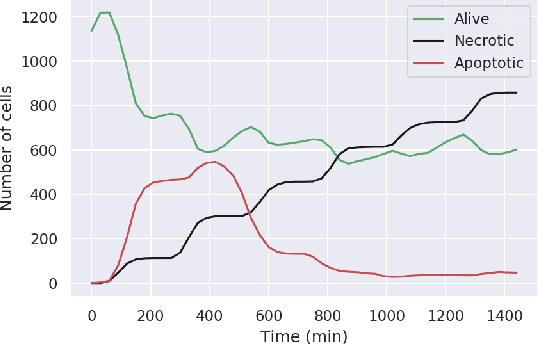
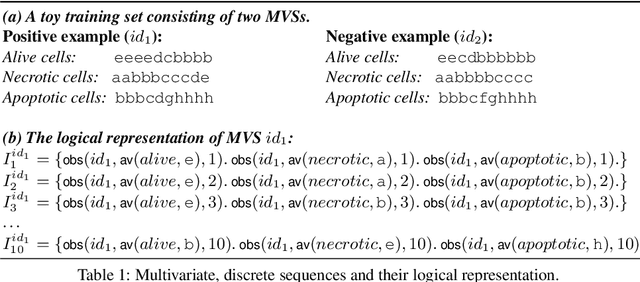
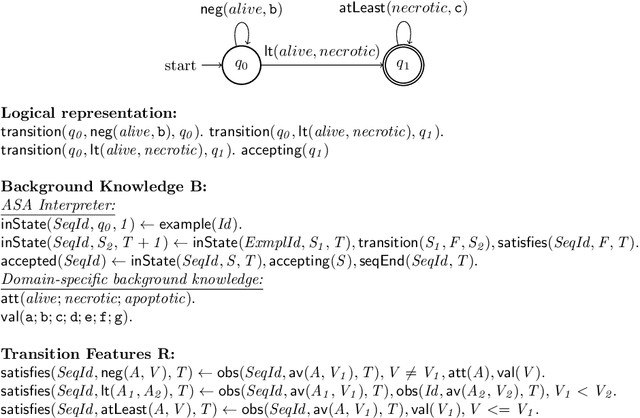
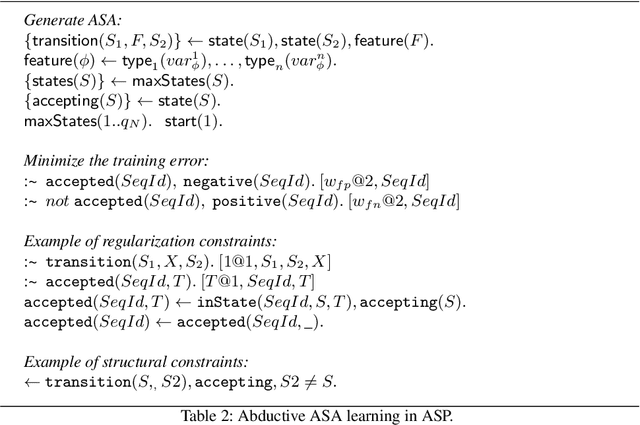
Abstract:Complex Event Recognition and Forecasting (CER/F) techniques attempt to detect, or even forecast ahead of time, event occurrences in streaming input using predefined event patterns. Such patterns are not always known in advance, or they frequently change over time, making machine learning techniques, capable of extracting such patterns from data, highly desirable in CER/F. Since many CER/F systems use symbolic automata to represent such patterns, we propose a family of such automata where the transition-enabling conditions are defined by Answer Set Programming (ASP) rules, and which, thanks to the strong connections of ASP to symbolic learning, are directly learnable from data. We present such a learning approach in ASP and an incremental version thereof that trades optimality for efficiency and is capable to scale to large datasets. We evaluate our approach on two CER datasets and compare it to state-of-the-art automata learning techniques, demonstrating empirically a superior performance, both in terms of predictive accuracy and scalability.
Artificial Intelligence Empowered Multiple Access for Ultra Reliable and Low Latency THz Wireless Networks
Aug 17, 2022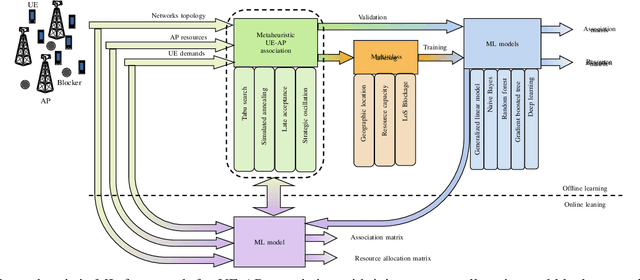
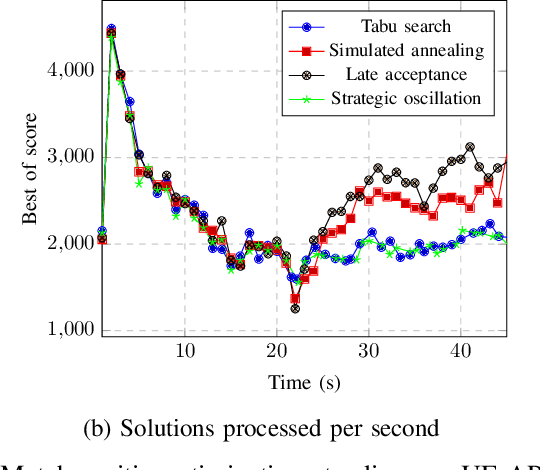
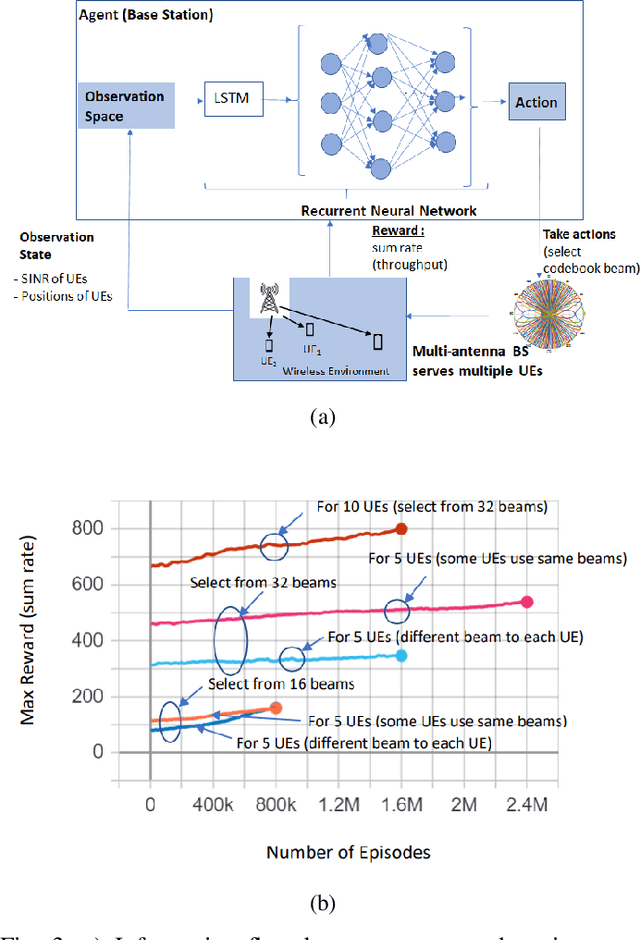
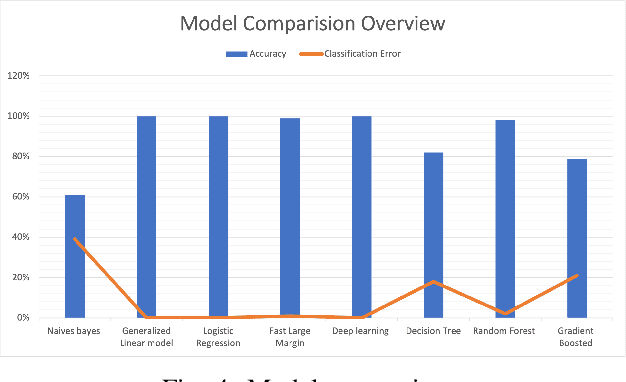
Abstract:Terahertz (THz) wireless networks are expected to catalyze the beyond fifth generation (B5G) era. However, due to the directional nature and the line-of-sight demand of THz links, as well as the ultra-dense deployment of THz networks, a number of challenges that the medium access control (MAC) layer needs to face are created. In more detail, the need of rethinking user association and resource allocation strategies by incorporating artificial intelligence (AI) capable of providing "real-time" solutions in complex and frequently changing environments becomes evident. Moreover, to satisfy the ultra-reliability and low-latency demands of several B5G applications, novel mobility management approaches are required. Motivated by this, this article presents a holistic MAC layer approach that enables intelligent user association and resource allocation, as well as flexible and adaptive mobility management, while maximizing systems' reliability through blockage minimization. In more detail, a fast and centralized joint user association, radio resource allocation, and blockage avoidance by means of a novel metaheuristic-machine learning framework is documented, that maximizes the THz networks performance, while minimizing the association latency by approximately three orders of magnitude. To support, within the access point (AP) coverage area, mobility management and blockage avoidance, a deep reinforcement learning (DRL) approach for beam-selection is discussed. Finally, to support user mobility between coverage areas of neighbor APs, a proactive hand-over mechanism based on AI-assisted fast channel prediction is~reported.
Online Learning Probabilistic Event Calculus Theories in Answer Set Programming
Mar 31, 2021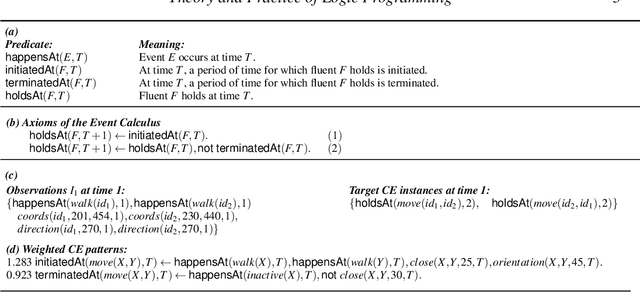
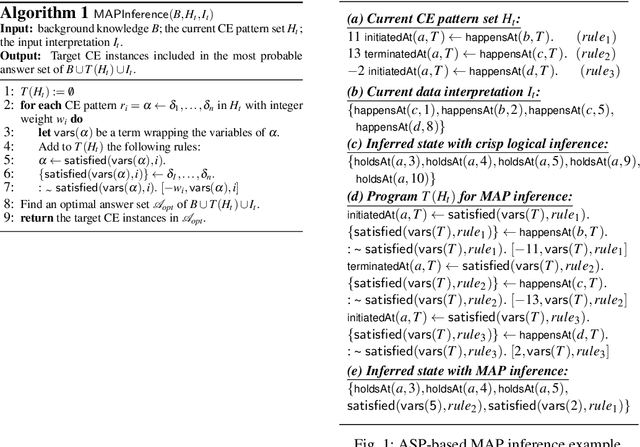
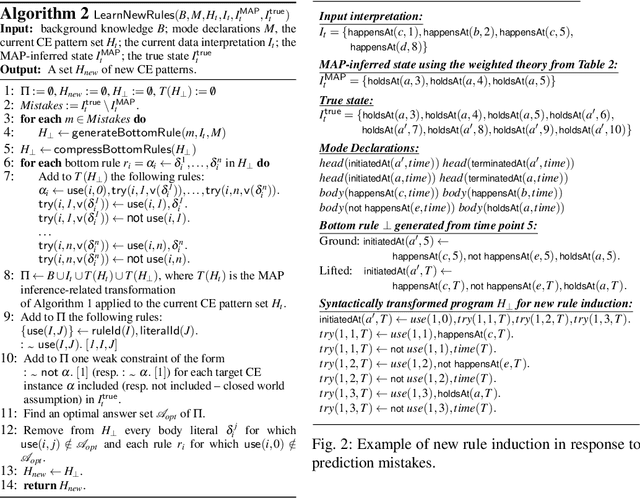
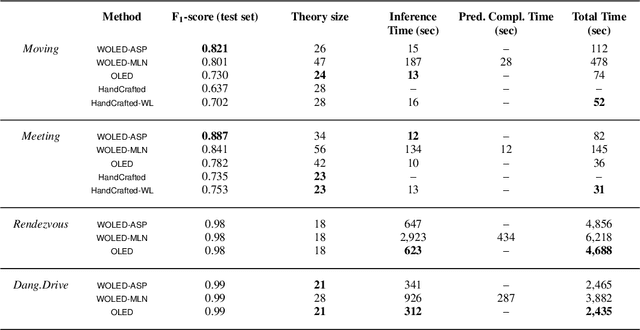
Abstract:Complex Event Recognition (CER) systems detect event occurrences in streaming time-stamped input using predefined event patterns. Logic-based approaches are of special interest in CER, since, via Statistical Relational AI, they combine uncertainty-resilient reasoning with time and change, with machine learning, thus alleviating the cost of manual event pattern authoring. We present a system based on Answer Set Programming (ASP), capable of probabilistic reasoning with complex event patterns in the form of weighted rules in the Event Calculus, whose structure and weights are learnt online. We compare our ASP-based implementation with a Markov Logic-based one and with a number of state-of-the-art batch learning algorithms on CER datasets for activity recognition, maritime surveillance and fleet management. Our results demonstrate the superiority of our novel approach, both in terms of efficiency and predictive performance. This paper is under consideration for publication in Theory and Practice of Logic Programming (TPLP).
The Complex Event Recognition Group
Feb 12, 2018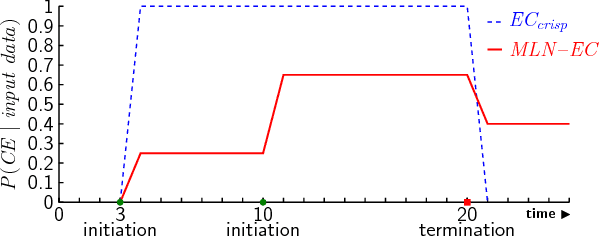
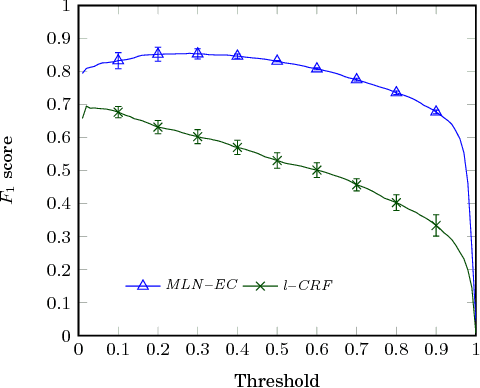
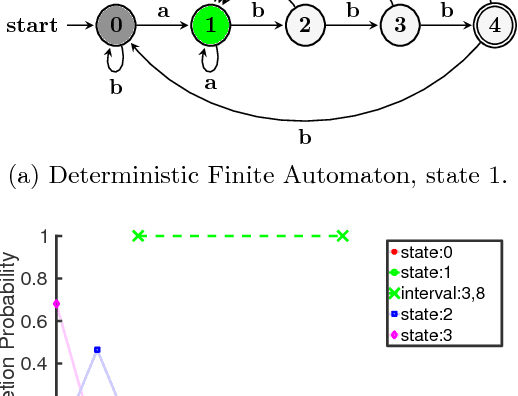
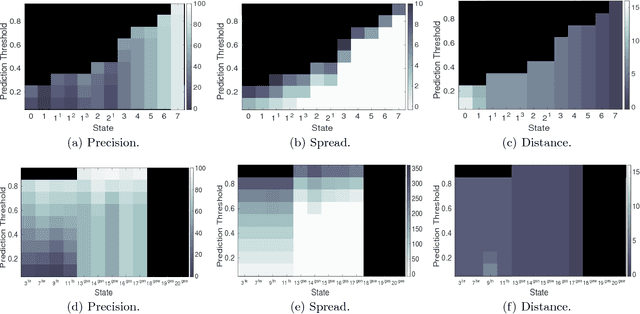
Abstract:The Complex Event Recognition (CER) group is a research team, affiliated with the National Centre of Scientific Research "Demokritos" in Greece. The CER group works towards advanced and efficient methods for the recognition of complex events in a multitude of large, heterogeneous and interdependent data streams. Its research covers multiple aspects of complex event recognition, from efficient detection of patterns on event streams to handling uncertainty and noise in streams, and machine learning techniques for inferring interesting patterns. Lately, it has expanded to methods for forecasting the occurrence of events. It was founded in 2009 and currently hosts 3 senior researchers, 5 PhD students and works regularly with under-graduate students.
Distributed Online Learning of Event Definitions
May 05, 2017
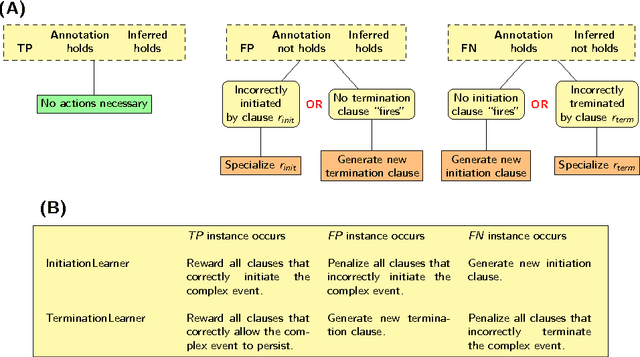

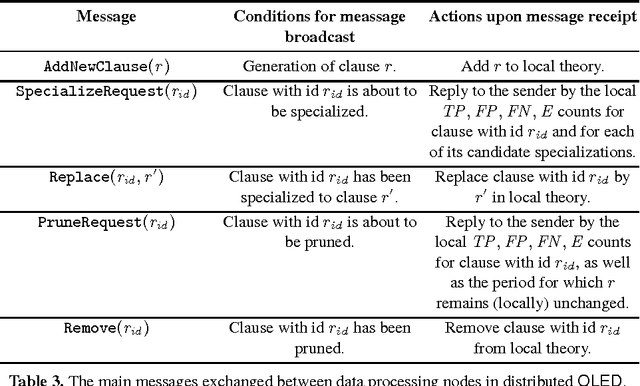
Abstract:Logic-based event recognition systems infer occurrences of events in time using a set of event definitions in the form of first-order rules. The Event Calculus is a temporal logic that has been used as a basis in event recognition applications, providing among others, direct connections to machine learning, via Inductive Logic Programming (ILP). OLED is a recently proposed ILP system that learns event definitions in the form of Event Calculus theories, in a single pass over a data stream. In this work we present a version of OLED that allows for distributed, online learning. We evaluate our approach on a benchmark activity recognition dataset and show that we can significantly reduce training times, exchanging minimal information between processing nodes.
Online Learning of Event Definitions
Jul 30, 2016
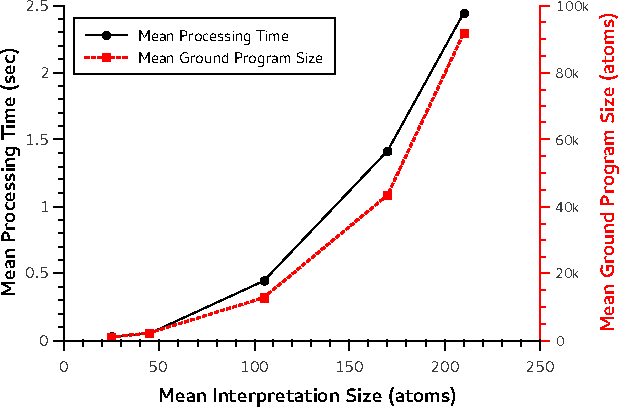


Abstract:Systems for symbolic event recognition infer occurrences of events in time using a set of event definitions in the form of first-order rules. The Event Calculus is a temporal logic that has been used as a basis in event recognition applications, providing among others, direct connections to machine learning, via Inductive Logic Programming (ILP). We present an ILP system for online learning of Event Calculus theories. To allow for a single-pass learning strategy, we use the Hoeffding bound for evaluating clauses on a subset of the input stream. We employ a decoupling scheme of the Event Calculus axioms during the learning process, that allows to learn each clause in isolation. Moreover, we use abductive-inductive logic programming techniques to handle unobserved target predicates. We evaluate our approach on an activity recognition application and compare it to a number of batch learning techniques. We obtain results of comparable predicative accuracy with significant speed-ups in training time. We also outperform hand-crafted rules and match the performance of a sound incremental learner that can only operate on noise-free datasets. This paper is under consideration for acceptance in TPLP.
Incremental Learning of Event Definitions with Inductive Logic Programming
Nov 22, 2014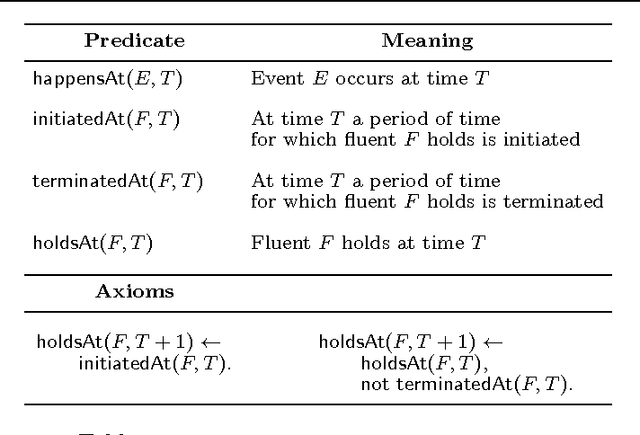
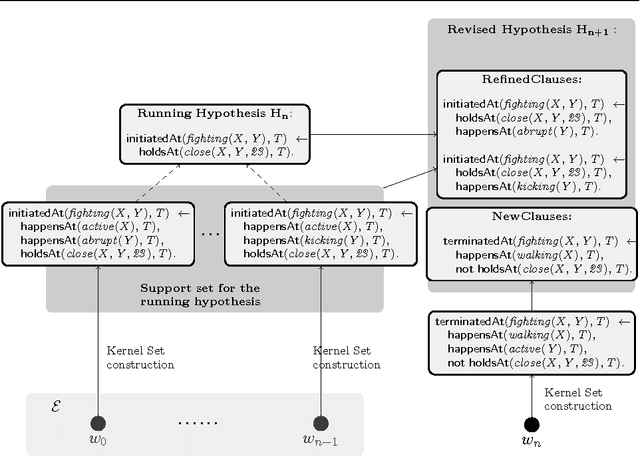
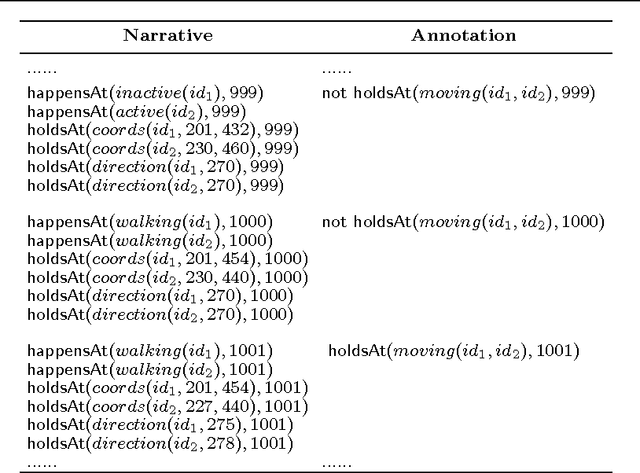
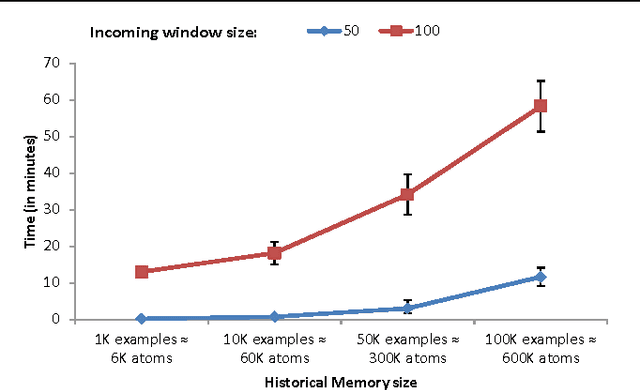
Abstract:Event recognition systems rely on properly engineered knowledge bases of event definitions to infer occurrences of events in time. The manual development of such knowledge is a tedious and error-prone task, thus event-based applications may benefit from automated knowledge construction techniques, such as Inductive Logic Programming (ILP), which combines machine learning with the declarative and formal semantics of First-Order Logic. However, learning temporal logical formalisms, which are typically utilized by logic-based Event Recognition systems is a challenging task, which most ILP systems cannot fully undertake. In addition, event-based data is usually massive and collected at different times and under various circumstances. Ideally, systems that learn from temporal data should be able to operate in an incremental mode, that is, revise prior constructed knowledge in the face of new evidence. Most ILP systems are batch learners, in the sense that in order to account for new evidence they have no alternative but to forget past knowledge and learn from scratch. Given the increased inherent complexity of ILP and the volumes of real-life temporal data, this results to algorithms that scale poorly. In this work we present an incremental method for learning and revising event-based knowledge, in the form of Event Calculus programs. The proposed algorithm relies on abductive-inductive learning and comprises a scalable clause refinement methodology, based on a compressive summarization of clause coverage in a stream of examples. We present an empirical evaluation of our approach on real and synthetic data from activity recognition and city transport applications.
 Add to Chrome
Add to Chrome Add to Firefox
Add to Firefox Add to Edge
Add to Edge